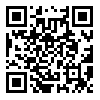目的 基于JAK/STAT信号通路探讨解毒化瘀颗粒治疗急性肝衰竭(ALF)的作用机制。方法 将60只无特定病原体级SD大鼠随机分为正常对照组、中药组、模型组和托法替尼组,每组15只。除正常对照组外,其余3组采用D⁃半乳糖胺盐酸盐和脂多糖制备ALF大鼠模型。在造模前3 d,给予正常组对照组、模型组、托法替尼组大鼠灌胃蒸馏水,给予中药组大鼠灌胃解毒化瘀颗粒溶液(浓度为0.3 g/mL),1次/d;在造模前1 h,给予托法替尼组大鼠腹腔注射托法替尼。造模后24 h麻醉大鼠,采血检测大鼠凝血酶原时间(PT)及血清ALT、AST、总胆红素水平,采集肝脏组织进行HE染色及TUNEL染色,采用实时荧光定量PCR检测大鼠肝组织JAK2、STAT3 mRNA表达水平,采用Western blot检测大鼠肝组织JAK2、STAT3、磷酸化JAK2(p⁃JAK2)、磷酸化STAT3(p⁃STAT3)蛋白表达水平。结果 与正常对照组相比,模型组大鼠PT,血清ALT、AST、总胆红素、血氨水平,TUNEL阳性率升高(P<0.05);与模型组相比,中药组、托法替尼组大鼠PT,血清ALT、AST、总胆红素、血氨水平,TUNEL阳性率降低,且托法替尼组大鼠PT、血清ALT水平、TUNEL阳性率低于中药组(P<0.05)。HE染色结果显示,正常对照组肝细胞呈放射状围绕中央静脉且排列整齐,肝小叶结构清晰,未见明显细胞坏死;模型组肝细胞可见大块、亚大块、桥接坏死且存活细胞严重变性,肝细胞排列无规则并可见出血,肝窦网状支架坍塌,炎症浸润较多;中药组、托法替尼组肝细胞坏死程度较轻,存活肝细胞数量多于模型组,炎症浸润少于模型组。与正常对照组相比,模型组大鼠肝组织JAK2、STAT3 mRNA表达水平升高;与模型组相比,中药组、托法替尼组大鼠肝组织JAK2、STAT3 mRNA 表达水平降低,且托法替尼组STAT3 mRNA表达水平低于中药组(P<0.05)。与正常对照组相比,模型组大鼠肝组织JAK2、p⁃JAK2、STAT3、p⁃STAT3蛋白表达水平及p⁃JAK2/JAK2值、p⁃STAT3/STAT3值升高;与模型组相比,托法替尼组大鼠肝组织JAK2、p⁃JAK2、STAT3、p⁃STAT3蛋白表达水平及p⁃STAT3/STAT3值降低,中药组p⁃JAK2、p⁃STAT3蛋白表达水平降低(P<0.05)。结论 解毒化瘀颗粒可能通过抑制JAK2、STAT3及其磷酸化形式的表达水平,从而抑制JAK/STAT信号通路的过度激活,减轻炎症反应,改善肝功能,发挥肝脏保护作用。
广西医学 页码:398-404
作者机构:裴浩,在读硕士研究生,住院医师,研究方向为中医药防治肝病。
基金信息:国家自然科学基金(82160888);广西自然科学基金(2022GXNSFAA035573、2023GXNSFAA026361)
- 中文简介
- 英文简介
- 参考文献
Objective To investigate the mechanism of Jiedu Huayu Granules for the treatment of acute liver failure (ALF) based on the JAK/STAT signaling pathway. Methods Sixty specific pathogen⁃free SD rats were randomly divided into four groups as follows: normal control group, Traditional Chinese Medicine group, model group, or tofacitinib group, with 15 rats in each group. Except for the normal control group, the ALF rat model of the remaining three groups was prepared by using D⁃galactosamine hydrochloride and lipopolysaccharide. Three days before modeling, the normal control group, model group, and tofacitinib group received intragastric administration of distilled water, while the Traditional Chinese Medicine group received intragastric administration of Jiedu Huayu Granules solution (with concentration in 0.3 g/mL) once daily. One hour before modeling, the tofacitinib group received an intraperitoneal injection of tofacitinib. At 24 hours after modeling, the rats were anesthetized, and blood was collected to detect prothrombin time (PT) and levels of serum ALT, AST, and total bilirubin. Liver tissues were collected for the HE staining and TUNEL staining. The mRNA expressions of JAK2 and STAT3 in liver tissues were detected by real⁃time fluorescent quantitative PCR, and the protein expressions of JAK2, STAT3, phosphorylated JAK2 (p⁃JAK2), and phosphorylated STAT3 (p⁃STAT3) were detected by employing the Western blot. Results Compared with the normal control group, the model group exhibited elevated PT, levels of serum ALT, AST, total bilirubin, and blood ammonia, as well as elevated TUNEL⁃positive rate (P<0.05). Compared with the model group, both the Traditional Chinese Medicine group and the tofacitinib group yielded decreased PT, levels of serum ALT, AST, total bilirubin, and blood ammonia, as well as decreased TUNEL⁃positive rate, with the tofacitinib group showing lower PT, serum ALT level, and TUNEL⁃positive rate as compared with the Traditional Chinese Medicine group (P<0.05). The HE staining results revealed that in the normal control group, hepatocytes were radially arranged around the central vein with clear hepatic lobule structure and no significant necrosis, whereas the model group displayed massive, submassive, and bridging necrosis, severe degeneration of surviving hepatocytes, disordered hepatocyte arrangement, hemorrhage, collapse of hepatic sinus mesh stent, and extensive inflammatory infiltration. Both the Traditional Chinese Medicine group and the tofacitinib group expressed as milder hepatocyte necrosis, more surviving hepatocytes, and less inflammatory infiltration as compared with the model group. Compared with the normal control group, the model group exhibited elevated mRNA expressions of JAK2 and STAT3 in liver tissues. Compared with the model group, both the Traditional Chinese Medicine group and the tofacitinib group yielded decreased mRNA expressions of JAK2 and STAT3 in liver tissues, with the tofacitinib group displaying a lower STAT3 mRNA expression as compared with the Traditional Chinese Medicine group (P<0.05). Compared with the normal control group, the model group demonstrated elevated protein expressions of JAK2, p⁃JAK2, STAT3, p⁃STAT3, as well as p⁃JAK2/JAK2 and p⁃STAT3/STAT3 ratios in liver tissues. Compared with the model group, the tofacitinib group exhibited decreased protein expressions of JAK2, p⁃JAK2, STAT3, p⁃STAT3 and p⁃STAT3/STAT3 ratio, while the Traditional Chinese Medicine group depicted decreased protein expressions of p⁃JAK2 and p⁃STAT3 in liver tissues (P<0.05). Conclusion Jiedu Huayu Granules can inhibit over⁃activation of JAK/STAT signaling pathway, reduce inflammatory responses, ameliorate liver function, exerting hepatic protection effect through inhibiting expressions of JAK2, STAT3 and their phosphorylated form.
-
无




 注册
注册 忘记密码
忘记密码 忘记用户名
忘记用户名 专家账号密码找回
专家账号密码找回 下载
下载 收藏
收藏
